How to clean a bathroom: a step-by-step guide for a gleaming finish
Follow our handy checklist for how to clean a bathroom to get sparkling results every time

Master how to clean a bathroom with our comprehensive, step-by-step guide to ensure you hit all the spots likely to get grubby. After all, the place we go to clean ourselves should undoubtedly be the cleanest room in the house.
Knowing the best order to tackle each area will also help you avoid having to go over surfaces twice, or missing essential parts of your bathroom that need cleaning in order to prevent nasties like mold, mildew, and limescale later down the line. In general, it's best to deep clean your bathroom every week to keep it looking its best – with touch-ups in between using handy cleaning hacks.
Simple daily actions, like wiping over tiles, rinsing away toothpaste splatters on the mirror, or scraping off soap build-up in the shower, can really help keep your bathroom hygienic. When you do have the time to execute a thorough bathroom clean, this step-by-step checklist will ensure you don't miss a single spot, leaving your entire bathroom sparkling and free from germs.
How to clean a bathroom: 13 step guide to a deep clean
Similar to a good kitchen cleaning routine, following a specific order will ensure you clean your bathroom as efficiently as possible. You can rest assured that you'll be tackling every area and best of all, it's a routine that won't take you longer than an hour to complete.
"Clean first, disinfect later," advises Ivan Ivanov from End of Tenancy Cleaning London. "Cleaning is all about removing contaminants from a surface, and disinfecting is about killing germs.
"First, clean the surfaces to remove any visible dirt by wiping them with soapy water or a cleaning spray. Next, apply a surface-appropriate disinfectant, such as disinfectant spray – this helps to kill off any germs."
We recommend cleaning with vinegar as a preferred natural solution for all of the following bathroom chores, but a general all-purpose cleaner is also suitable to clean all surfaces, making cleaning more efficient because you can use the same solution for every task.
Sign up to our free daily email for the latest royal and entertainment news, interesting opinion, expert advice on styling and beauty trends, and no-nonsense guides to the health and wellness questions you want answered.
1. Clear surfaces by removing or tidying away clutter
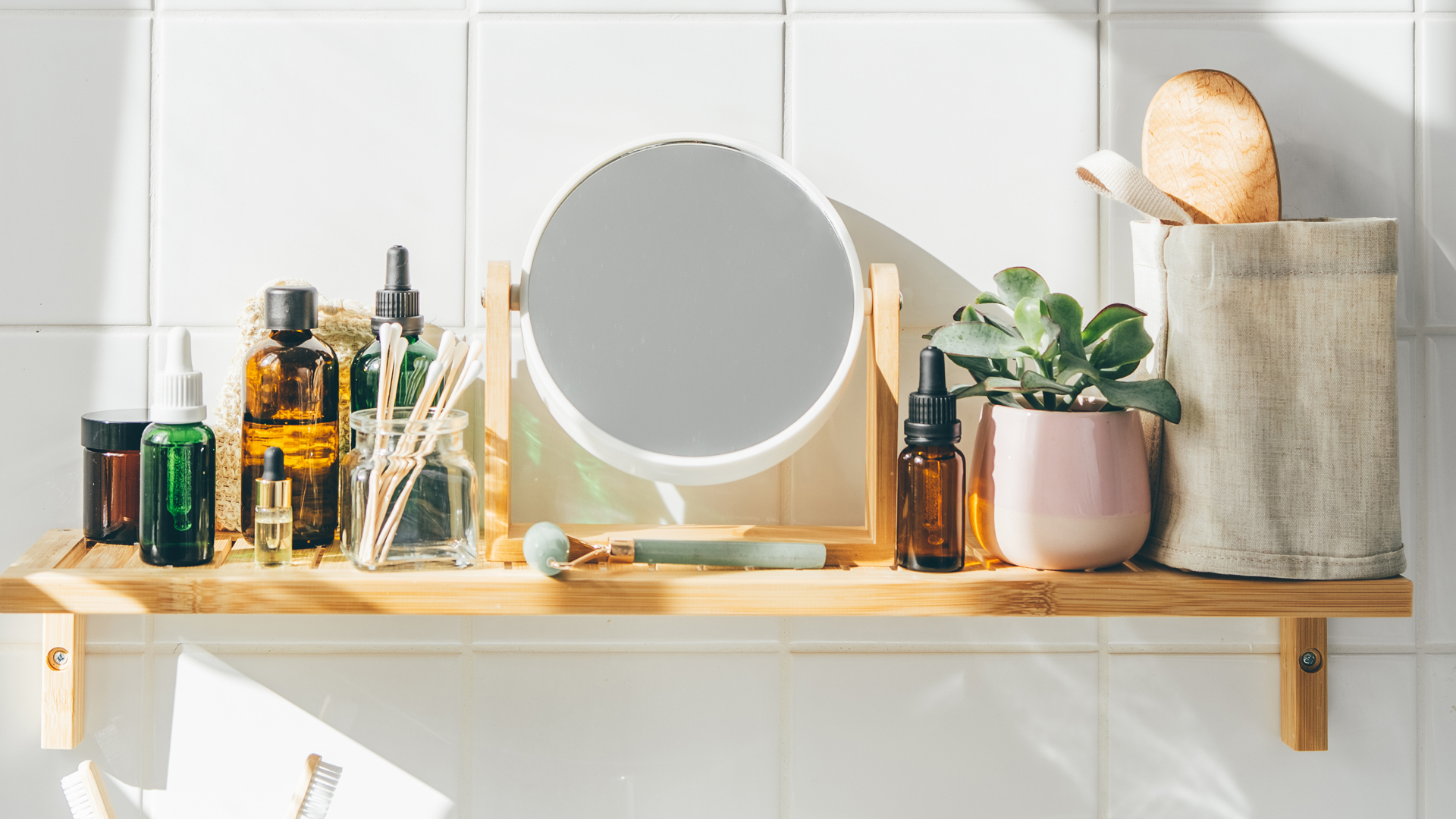
It's amazing how fast clutter can accumulate in a bathroom, especially if more than one person shares the same space. Before you start cleaning, remove anything that doesn't belong in the bathroom – be it perfumes, candles, or makeup. If you don't have bathroom storage or you're in a hurry, you can toss the extra items in a basket to organize later.
Now is the time to declutter all of the bathroom rubbish that has accumulated after the last week or few days. Throw away empty toilet rolls, and empty shampoo bottles, and put any towels and bath mats in the wash – so they are being cleaned at the same time.
Take everything off the surfaces so they are completely clear, to enable you to clean thoroughly. Also remove all items from the back of the toilet, counters, shower shelves, and the side of your bathtub to clear the floor ready for cleaning.
2. Clean the toilet
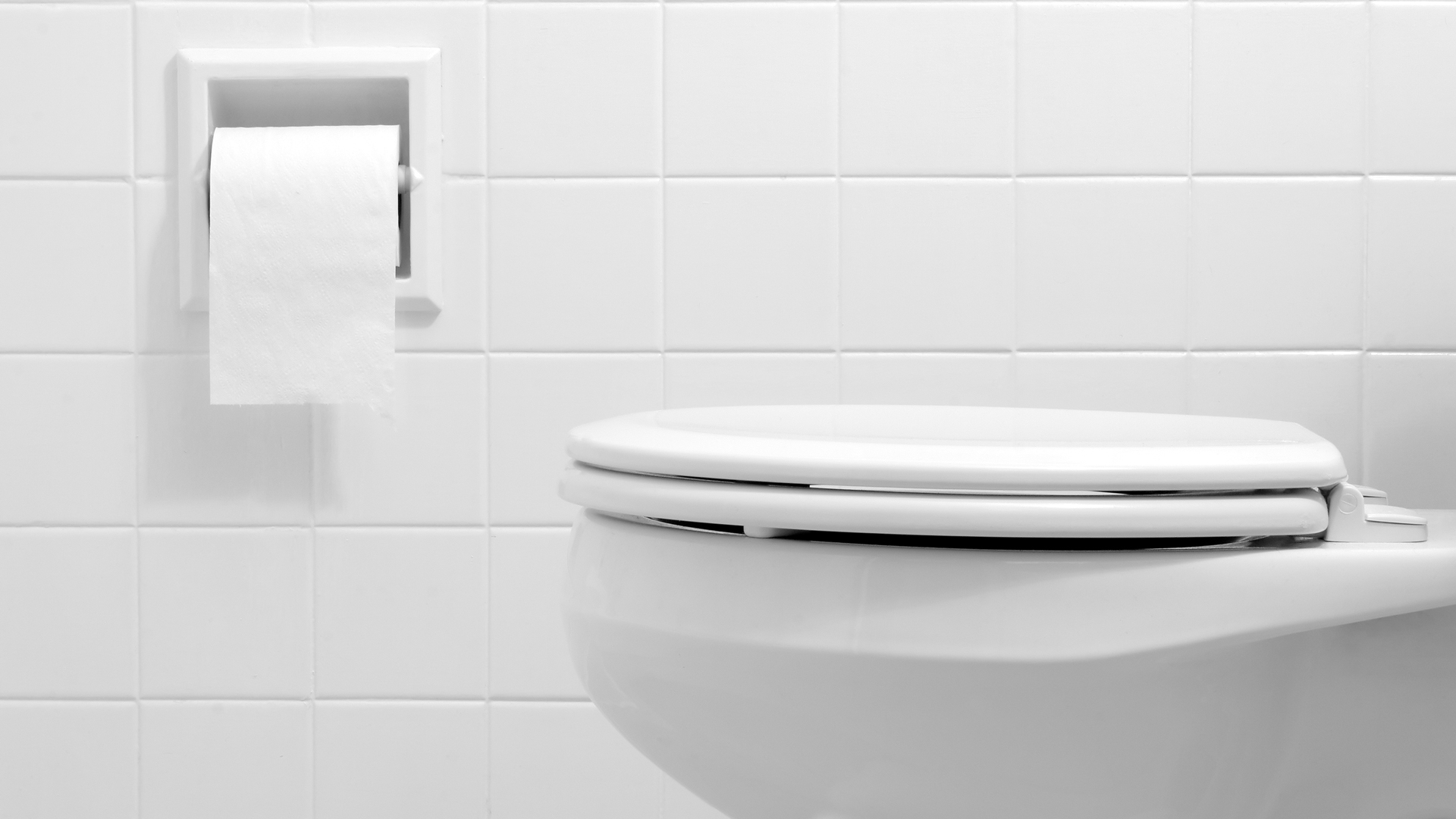
Now it's time to get started on the actual cleaning. We'd advise scrubbing the toilet first so that the dirtiest (and likely the most dreaded) job is taken care of immediately. Start the process of how to clean a toilet by using a toilet brush and a disinfectant cleaner on the inside of the toilet, scrubbing every inch of the toilet bowl. Then, clean the toilet seat, and lift it up to clean underneath.
"When disinfecting, ensure you use solutions that contain at least 70% alcohol or diluted household bleach solutions," advises Ivan. "But don’t use bleach with any other bleach solutions as this will be pointless and not make the surfaces any cleaner. It’s also a good idea to check the expiry date of your cleaning products before use, as this can compromise how effective they will be."
Take note that how to clean toilet stains effectively is a different process where bleach won't work – as bleach merely disguises stains by removing the color. The best thing for stains, caused by a limescale build-up, is vinegar.
Finally, wipe down the outside of the toilet, including the top and sides of the tank. Don't forget to clean the toilet handle in the same way as this can be one of the dirtiest parts of any bathroom! An all-purpose cleaner is ideal for the outside of the toilet.
Howard Moss, CEO of Astonish shares his top tip, "instead of rinsing a cloth from the dust and dirt of a toilet and then having to wash it afterward, use toilet roll to trap and hold the dust even when it’s wet with disinfectant. That way you can avoid cleaning it twice." Howard adds, “toilet roll is biodegradable as it’s made from natural materials, it's perfect for cleaning damp areas and going the extra mile.”
3. Clean the shower
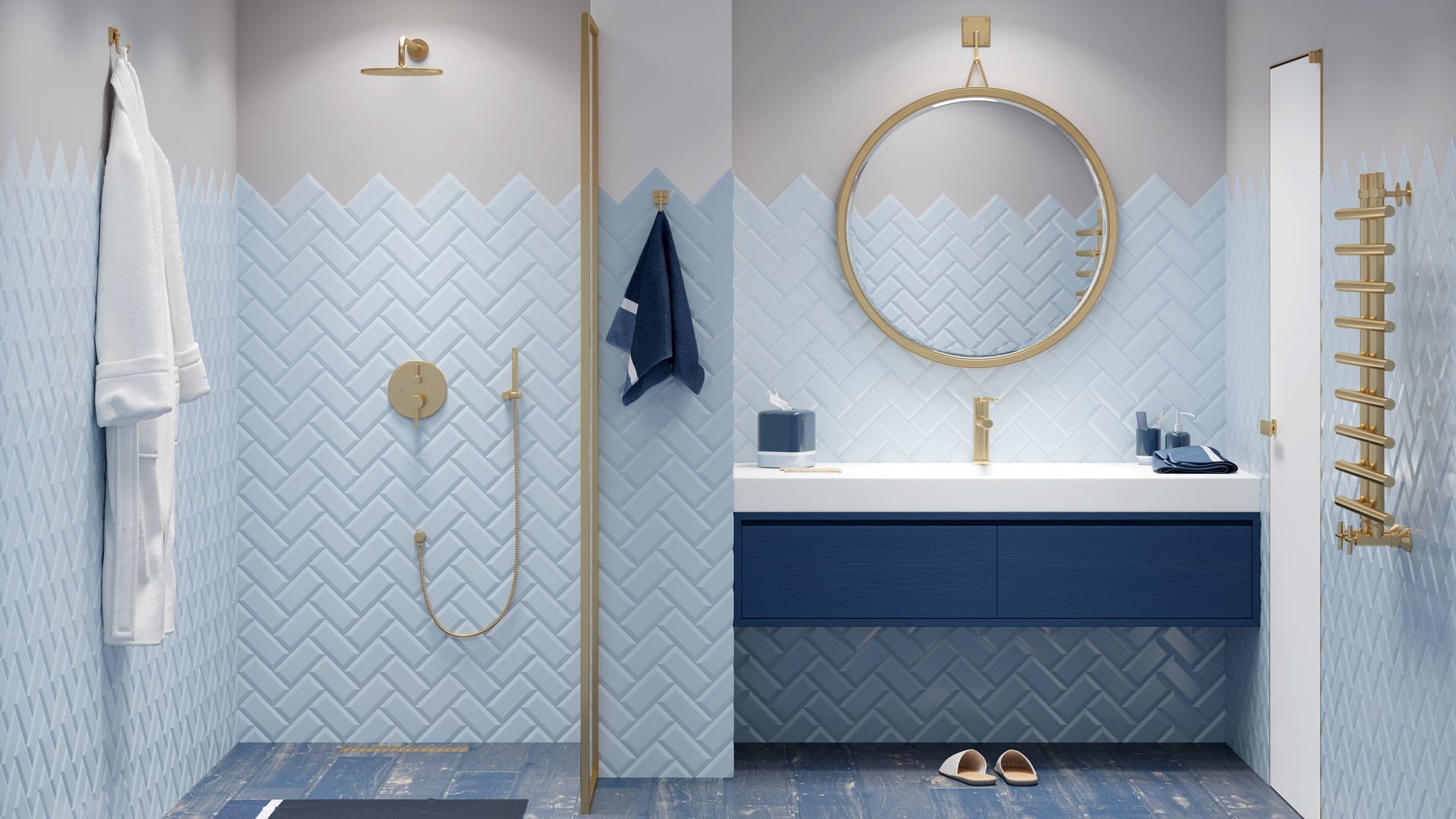
To clean the shower properly, start by spraying all surfaces inside the shower with your cleaning product of choice, you can use an all-purpose general cleaner or your own natural cleaning solution, to wipe down all the walls, shower tray, and shower door, and fittings.
"To clean up the shower door, screens, and tiles for the best results make up my homemade shower screen cleaner using, water, a squirt of washing up liquid 20ml of white vinegar, and 5 drops of eucalyptus oil," says Lynsey Crombie, professional cleaner and TVs Queen of Clean. "Shake well for the best streak-free finish," simply fill up a spray bottle and spray all over each surface. Leave it to sit for 10 minutes, and wipe the mixture off with clean water and a sponge or squeegee for extra efficiency.
Don't forget to clean the shower head because it's often a forgotten spot, but it can accumulate a lot of limescale – we've found a watered-down vinegar is the best solution to tackle this area. "Or cut a lemon in half cover with bicarb and rub all over, leave to sit, and then rinse and buff," suggest Lynsey.
If you have a cloth shower curtain, you can pop this in the washing machine on a 30 degrees wash. For a plastic shower curtain, put together a mixture of baking soda and water, and use a cloth to scrub the mixture into the curtain, tackling all the scummy or moldy spots. Then, rinse the mixture away with water.
4. Scrub the bath clean
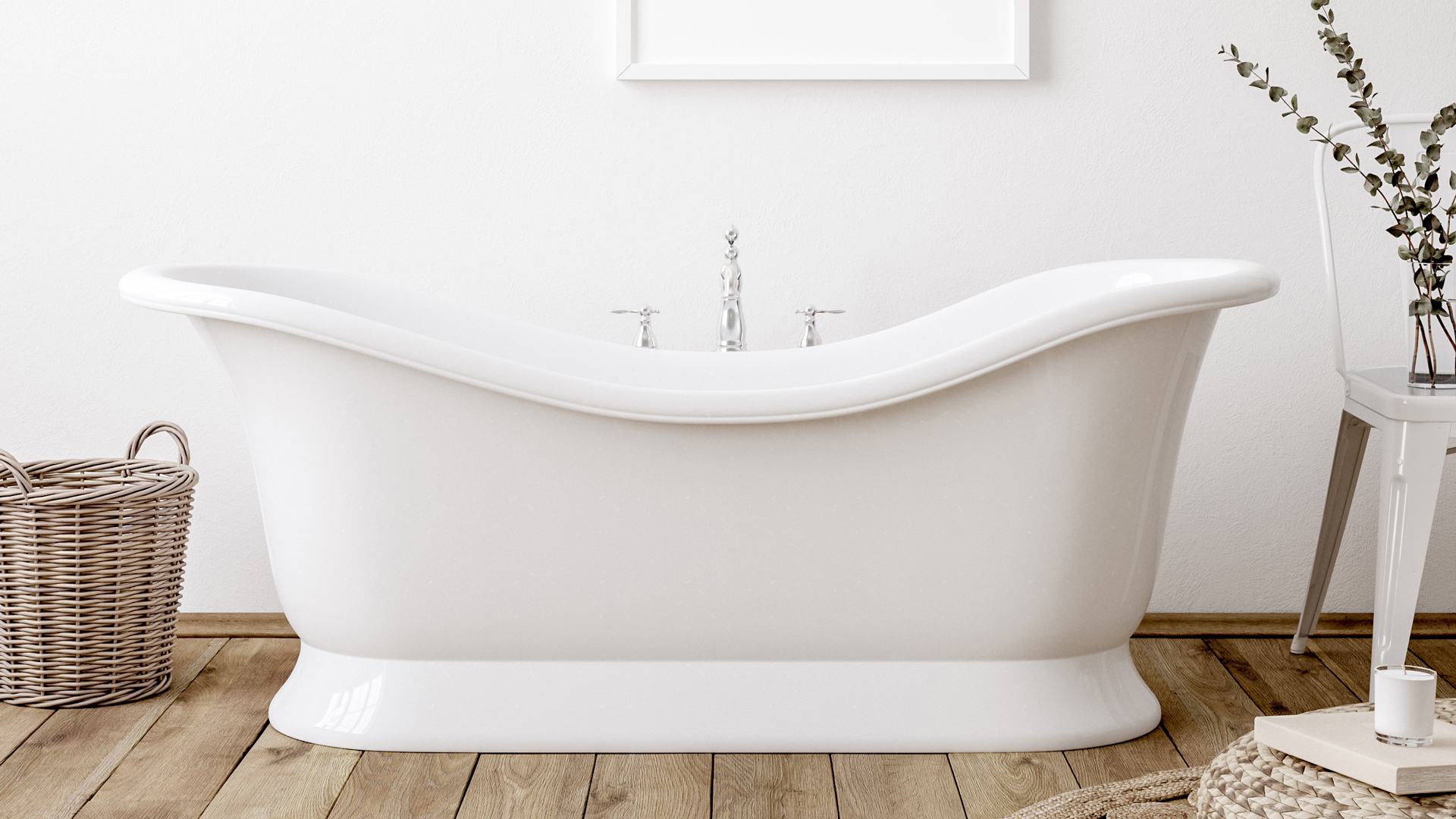
To clean the bath, first, rinse away any traces of dirt or hair from the surface. Then either use an all-purpose bathroom cleaner to coat the bath or sprinkle baking soda across it. Then, take a scrubbing sponge, dip it in water, and get scrubbing! Rinse away products with water afterward. It's also important not to forget your bath towels and mat when cleaning your bath and shower too. After you've cleaned your bath and shower, chuck these on a hot wash to get rid of any built-up dampness and bacteria.
For regular weekly maintenance, clean your bath with a standard shower cleaner or all-purpose bathroom cleaner and a sponge or squeegee. The trick is to keep up with your bath cleaning routine on a weekly basis, if you can, to avoid tough scrubbing due to accumulated grime and watermarks.
5. Tackle the sink and taps
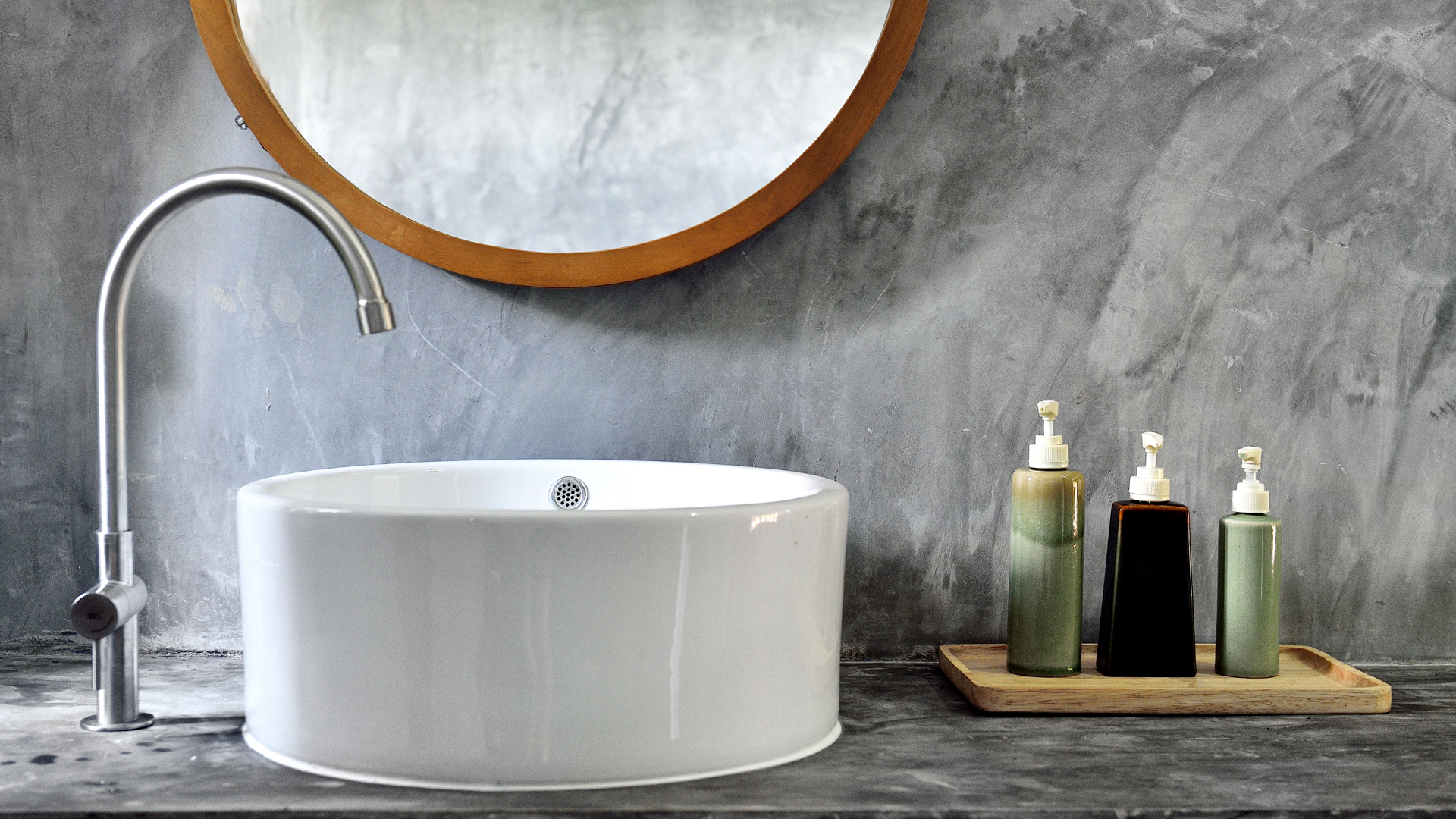
Clean your bathroom sink including the basin, taps, and the bottom of the sink with your natural solution or all-purpose bathroom cleaner. Spray it down and using a clean microfiber cloth, scrub each part of the sink thoroughly to remove soap scum or toothpaste stains. Rinse with clean water before wiping the sink down with another, dry microfiber cloth to buff clean.
Then spray the water fixtures (including the sink taps) throughout your bathroom with a surface cleaner and wipe them down with a soft cloth. Vinegar is the much-loved cleaning hack for removing limescale build-up around taps, but be aware if just because if tackling cleaning a stainless steel sink and taps that prolonged exposure to vinegar is not recommended – so limit the amount of time you leave it on and always rinse thoroughly with clean water after cleaning.
6. Wipe down counters and surfaces
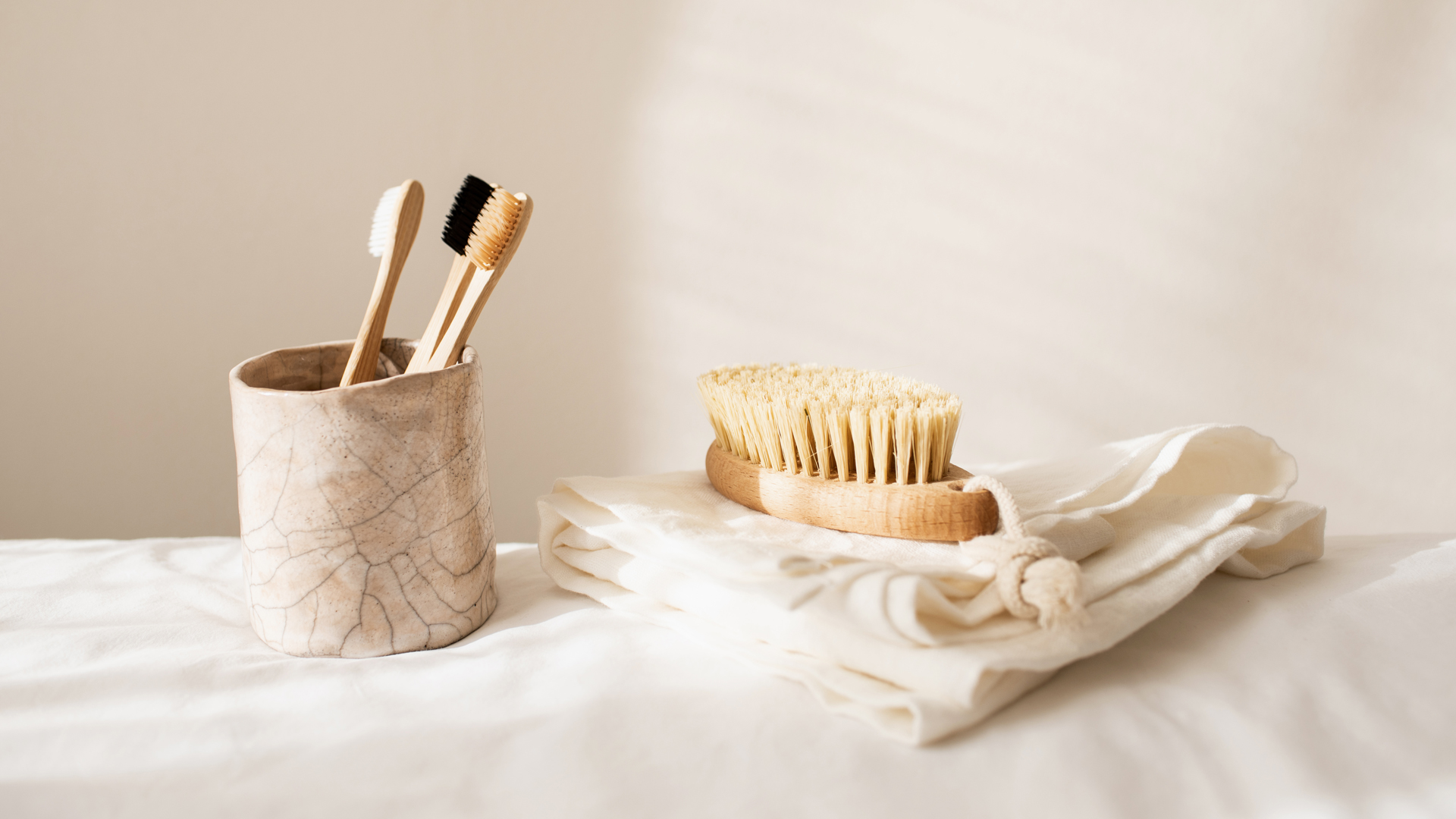
Wipe down the surfaces to clean away dust and grime. Use your preferred all-purpose bathroom cleaner to wipe down counters and surfaces throughout the bathroom – including shelves, above-the-sink cabinets, and any other surfaces you might have. Pay particular attention to corners and edges, scrubbing hard if there is any scaly or soap build-up. Once you've finished scrubbing, rinse with water to get rid of any cleaning product.
Now is also a good time to take the opportunity to clean the door handles in your bathroom too. They are high-traffic areas that are touched much more regularly than we think, so it's a good idea to sanitize them often and incorporate them into our deep-clean bathroom routine. If you have marble in your bathroom tailor your routine to how to clean marble specifically.
7. Clean bathroom cabinets inside and out

This is a great time to clean the outside of your cabinets, which are often easily forgotten. Choose a natural cleaning product that is compatible with your cabinet material. If you have wood cabinets, you may want to use a wood cleaner instead of a formula meant for stone or ceramic.
Start by cleaning the inside of the doors to make sure you really get a deep clean done, then close the cabinet doors and clean the outside with the handles included.
8. Clean between the tile grout
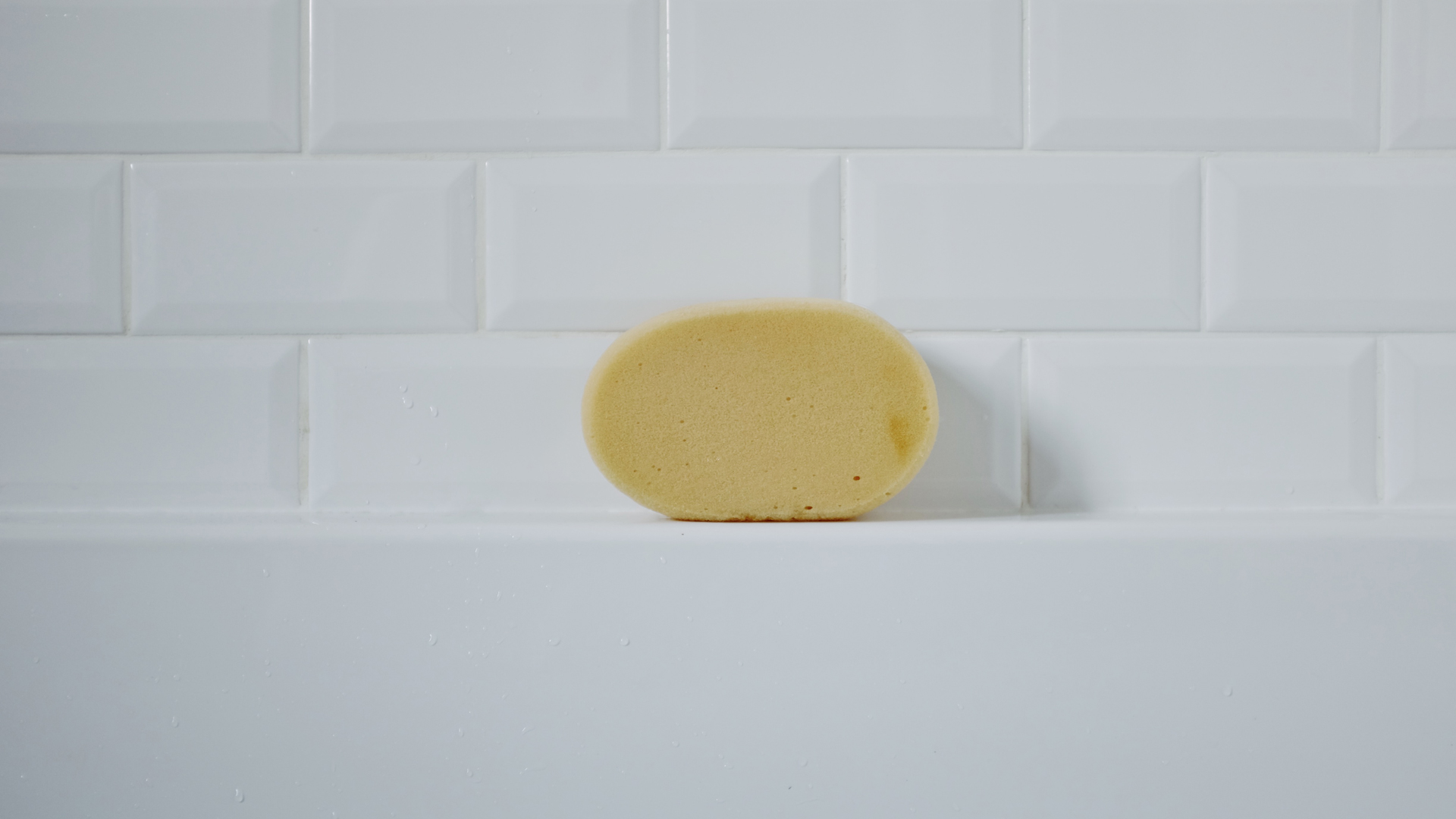
Grout grime is a common tile cleaning issue that leaves many of us stumped when it comes to cleaning. Whether in the shower cubicle, behind the sink, or beside the toilet cleaning grout is necessary to keep walls sanitized.
Ivan shares his top tip, saying: “by using baking soda, vinegar, and a small grout brush, you can get the dirt out just as quick. Simply brush baking soda on the grout and make sure it is completely covered. Then spray over the vinegar, brush away and the chemical reaction from the vinegar and baking soda has done the work for you.” Be sure to wipe the surfaces over with a clean damp cloth to remove all traces of the vinegar solution.
If you have particularly stubborn yellowing stains in the grout, try applying a mixture of dish soap, peroxide, and water. Scrubbing with a toothbrush can help you get out some of the most stubborn stains.
9. Empty and disinfect the bin
The bathroom bin may be smaller than that of the best kitchen bins but it's more than likely to harbor as many if not more germs, due to the nature of what needs disposed of in a bathroom. It's therefore a key component to clean as part of your weekly routine.
Firstly empty the contents into a refuse sack to throw out, then remove any internal compartments to offer a deep clean using a diluted cleaner with hot water can help remove and eradicate any dirt and bacteria build-up.
10. Unclog and clean the drains
Drains are particularly difficult to clean due to the fact we cannot see what is lurking within but it's an especially important part of cleaning a bathroom thanks to the hair and daily soap residue which can often lead to them smelling and getting blocked. To remove unwanted hair from plug holes it's best to use a pair of tweezers to pull any visible hair and grime out, to save flushing it further down the drain as this could cause potential blockages at a later stage. See our dedicated guide on how to unblock a drain if yours requires a bit more elbow grease.
Once all visible signs of hair are removed it's time to clean the drains. Ivan advises, “for a quick drain clean, put a dishwasher tablet over the top of the plug and run boiling water over the top of it so it dissolves. This should unblock some of the grime and leave drains smelling fresh."
11. Wipe over bathroom accessories
Once your bathroom clean is complete, replace the items that were removed earlier, like toothbrush holders, soap dispensers, and any bottles from your shower or bathtub because now is the ideal time to clean any of those items you moved out the way in order to clean. A quick clean can prevent these bathroom accessories from transferring dirt and grime right back on those newly cleaned surfaces.
For example, if your toothbrush holder, the soap dispenser, or the soap dish in the shower has started to get a little grimy, wipe them down with a wet microfiber cloth so that they'll be ready to go back to their usual places which are now all sparkling clean.
12. Polish the mirror
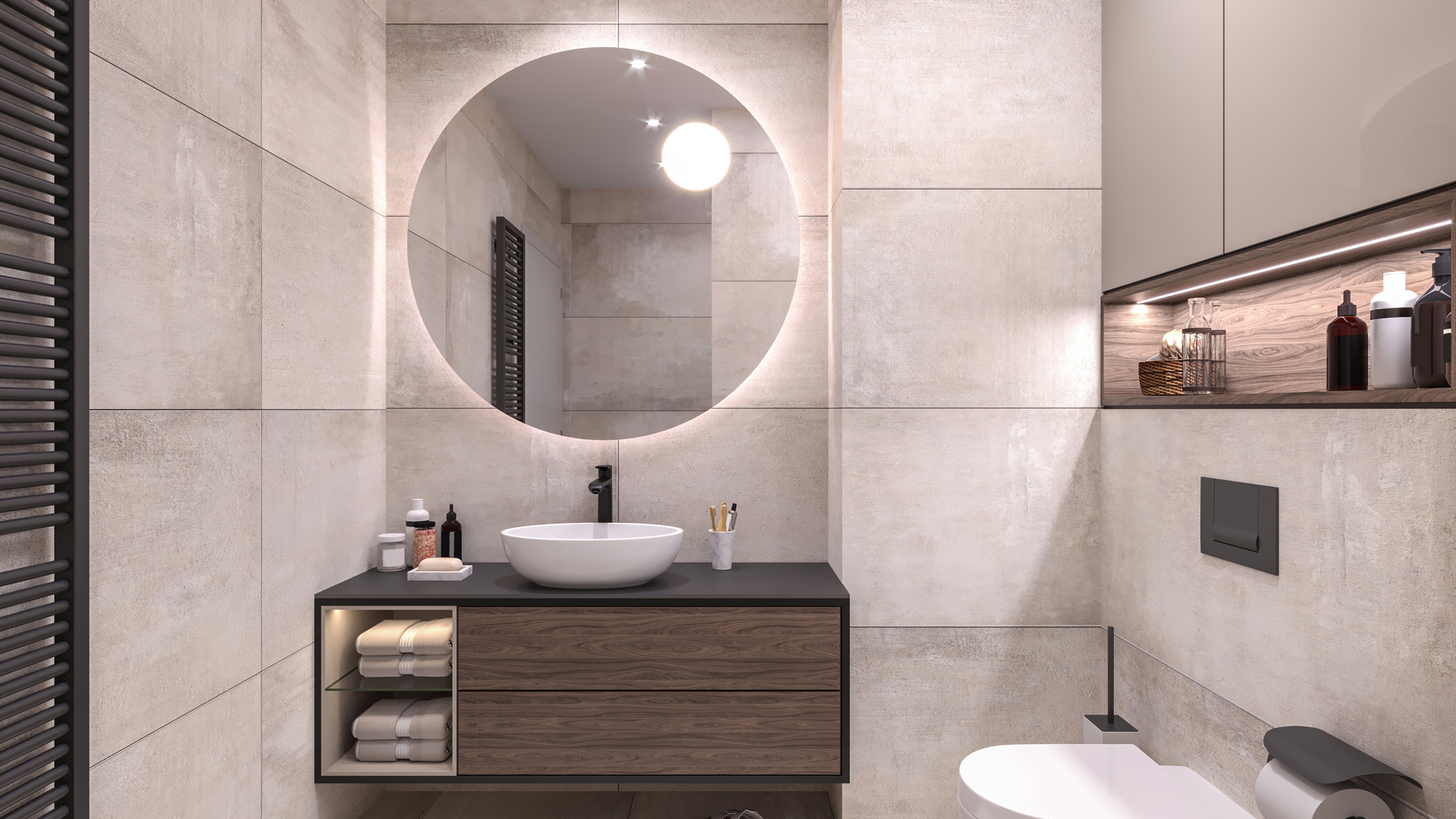
Once the germ-infested areas are cleaned, it's finally time to tackle the finishing touches, such as mirrors. Wipe down the mirror with a specific glass cleaner or a water and vinegar solution similar to that used to master how to clean windows for a streak-free finish. Use a non-streak cloth or microfibre towel to further help remove streaks from the finished area.
13. Wash the floor
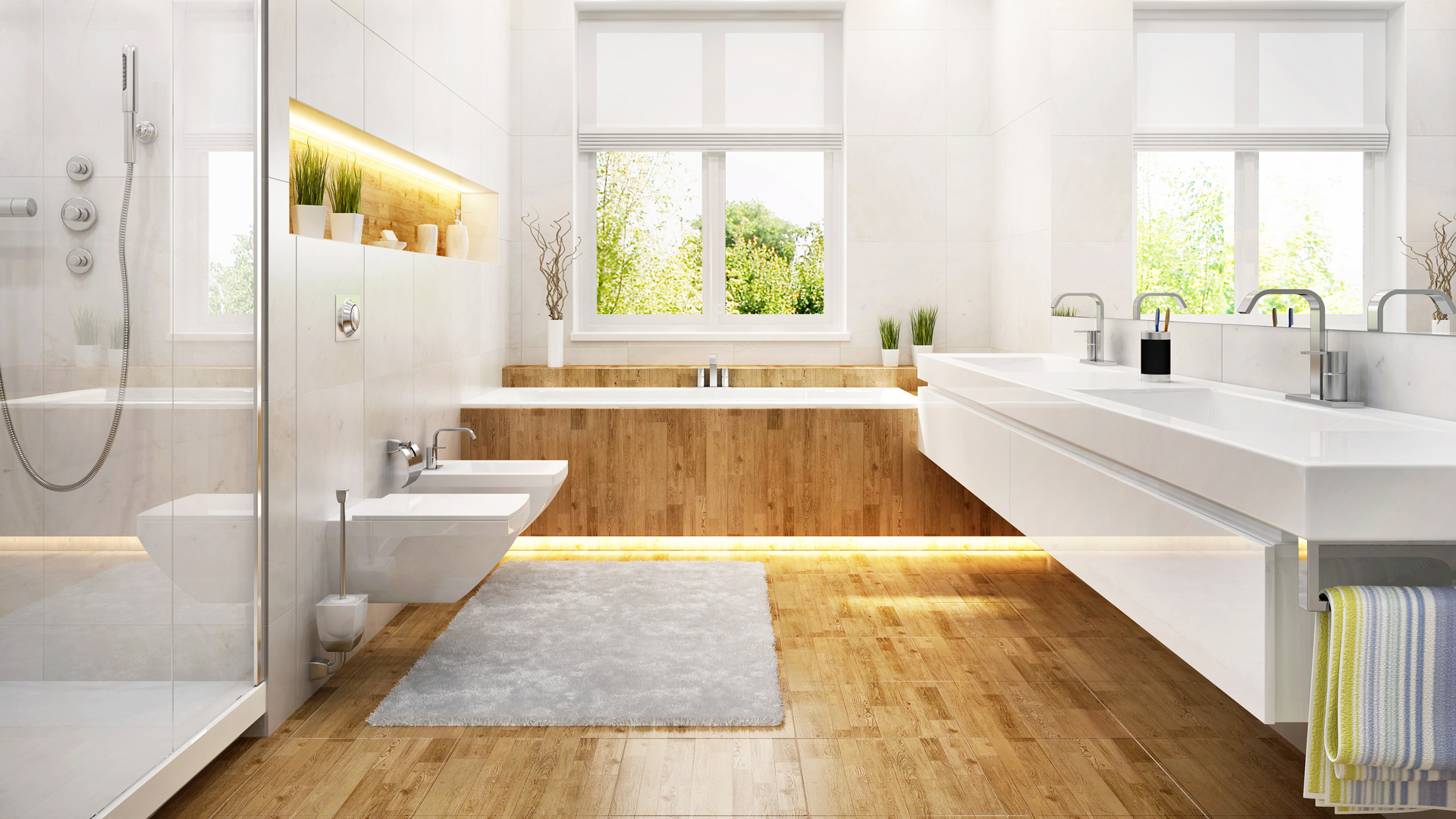
The final job is to clean the floors - something that should be done last, given that you don't want to walk over your clean floor once washed! Mix up a cleaning solution that is safe for your floors and that won't leave a slippery residue behind. Vinegar and hot water, with just a couple of squirts of dish soap, is a great choice if you don't have a specialist floor cleaner. Drop a few drops of essential oil into the mixture if you want to avoid acidic smells
Pay particular attention to the area around and behind the toilet, and corners where dirt and grime often collect. You may choose to use a mop – or, in a smaller bathroom, it may be easy enough to get down on your hands and knees and scrub the floor for a really thorough clean.
If you have laminate floors in your bathroom, follow a best practice guide for how to clean laminate floors or how to clean hardwood floors properly to prevent any damage to the flooring. Seeking the best steam cleaner is also incredibly helpful and hygienic for cleaning tiled or bathroom floors.
How often should we clean the bathroom?
How often we should clean the bathroom, much like how often should you vacuum or how often should you wash sheets is a question which will very much depend on individual household routines. Generally speaking, it's advised that you should be cleaning your bathroom once a week to keep watermarks, limescale, and bacteria at bay.
However, some parts of it should ideally be cleaned more frequently, say every other day, to ensure your bathroom is as sanitary and germ-free as possible:
- Toilet: You may want to aim to clean your toilet two or three times a week, especially if you have young children. However, most can agree that a once-a-week clean of the toilet (if there are no sickness bugs in your home), is sufficient.
- Sink: Similarly, the sink will generally be more than fine with you giving it a weekly clean. However, if spillages occur on the basin, such as toothpaste or soap, it's best to spot-treat it and scrub off the products as you go, in order to avoid having to scrub off hardened-on dirt or products at the end of the week
- Bath/shower: This should be cleaned once a week, but it depends on how often you use it. If you have a separate bath and shower, you might not use the bath as often, in which case, a clean once every two weeks can suffice. You should also make sure to clean the showerhead every other week or so too, as they can experience a lot of limescale build-up. However, if your bath and shower are together in one unit, it's best to clean it weekly, with daily wipe-downs after every use to avoid watermarks.
- Door handles: The handles of your bathroom door might slip your mind during your bathroom cleaning routine, but don't forget them! Give this a wipe with disinfectant every other day to avoid any germs or grubby handprints.
- Towels/flannels/bathmats: It's just as important to clean your bathroom linen as it is the actual bathroom itself. Be sure to throw all of these items into your washing machine at least once a week—and consider replacing your towels and flannels after every three showers to keep them as fresh as possible.
To ensure the best standard of cleaning every time Ivan offers his advice: "Don’t forget to give cleaning utensils such as cloths a clean too, otherwise you’ll end up spreading germs around to other surfaces. As a result, where possible, use paper towels or use reusable clothes that should be disinfected or washed immediately after use. The same goes for all mops and buckets, which should be cleaned and dried after each use." It's easy to clean microfiber cloths, just remember to do it ready for when you next need to clean.
What are the dirtiest spots in our bathrooms?
Of course, when your bathroom hasn't had a good clean for a little while, it can all feel a little grubby. But what are the dirtiest spots in our bathrooms? Often, the grimiest spots can be places that we forget to clean during our routines or high-traffic areas that need cleaning more than others. They include:
- The door handles: You might not expect it, but the handles of your bathroom door can be one of the grimiest spots in the entire room. And it's really hardly surprising—with most people using the bathroom multiple times a day, it's one of the most often touched spots in the entire home. Keep yours clean and germ-free by wiping down with a disinfectant wipe at least every other day
- The floor: It's probably not the first place you'd imagine would house the most bacteria, but the floor of the bathroom is actually thought to be the dirtiest place in the room by far. This is mainly because germs and droplets from the toilet can fly out when we flush and land—you guessed it—right on the floor. Similarly, dirt can be tread into the bathroom from other rooms in the house. That's why it's so important to mop your floors as often as you can, to keep them as sanitary as possible.
- The bathmat: We step out onto it after every day after a shower or a bath, but did you know that the soft, plushy bathmat under your feet can actually harbor a plethora of bacteria? Whilst it's also prone to the germs that accumulate on the floor, it also tends to gather large amounts of water every day which, if left unaired and unwashed, can lead to mold or other nasties. Wash yours on a hot wash weekly to prevent this.
- The showerhead: When cleaning your shower one spot you should be sure not to miss is the showerhead. It's commonly ignored when we clean the shower, but it can accumulate plenty of limescale and soap scum if not properly scrubbed—so don't forget it.
- The toilet: No list of dirty bathroom areas would be complete without this much-used bathroom spot, but it's actually the handles of toilets that accumulate the most dirt. The toilet bowl itself is subject to regular flushing, but a swirl of bleach and spritz of anti-bacterial spray as you go will help keep the area cleaner.
Amy Hunt is an experienced digital journalist specialising in homes, interiors and hobbies. She began her career working as the features assistant at woman&home magazine, before moving over to the digital side of the brand where she eventually became the Lifestyle Editor up until January 2022. Amy won the Digital Journalist of the Year award at the AOP Awards in 2019 for her work on womanandhome.com.


